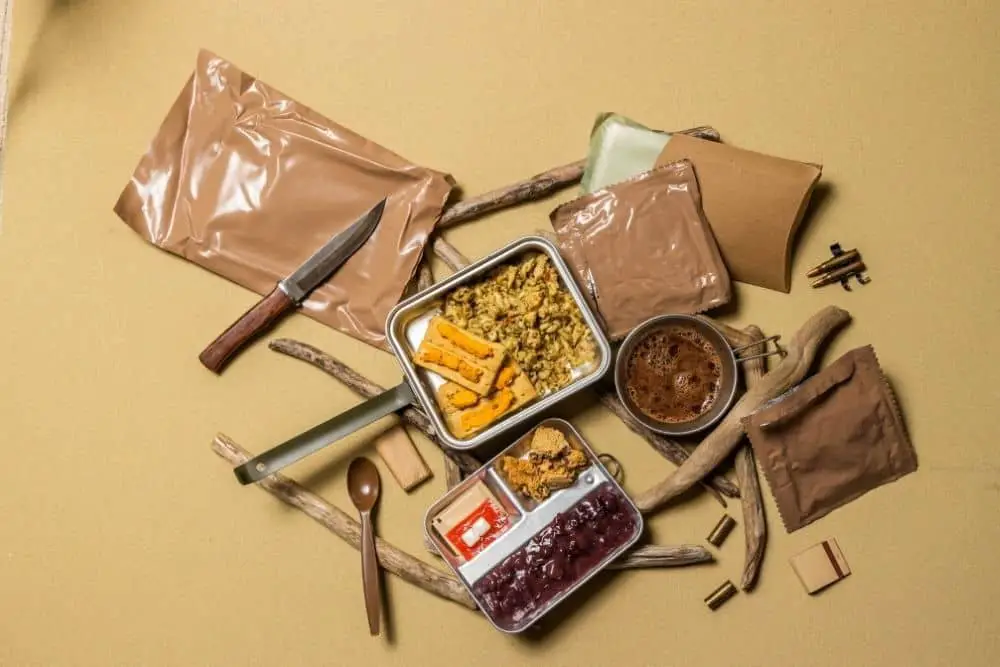MREs, or Meals Ready to Eat, have been around for a long time and are often used by the military. But are they good for you? Do they make you fat? In this blog post, we will take a look at MREs and discuss whether or not they are healthy. We will also provide some tips on how to make MREs more nutritious and less fattening. Stay tuned!
MREs are not as healthy as regular food. They are often high in sodium and fat, which can lead to weight gain. However, there are ways to make MREs more nutritious. For example, you can replace the unhealthy sides with healthier options, such as fruits or vegetables. You can also choose low-fat or low-calorie versions of MRE items.
Overall, MREs are not the best choice when it comes to nutrition, but they can be made healthier by making a few simple changes. So if you have to eat an MRE, don’t worry – just be mindful of what you’re eating and make some healthy substitutions when possible. And most importantly, enjoy your meal!
What are MREs, and what do they contain?
MREs stands for “Meal, Ready to Eat” and are pre-packaged, complete meals that are designed to be nutritionally balanced and shelf-stable. They typically contain a main course, side dish, dessert, and drink powder or concentrate.
MREs can be eaten cold or can be heated up in a matter of minutes. There is no one-size-fits-all answer to this question, as the amount of weight you will gain (if any) from eating MREs depends on a variety of factors, including your individual dietary habits and metabolism.
However, as with any type of food, it is important to practice moderation when incorporating MREs into your diet. Some people argue that MREs are not as healthy as fresh, home-cooked meals and can lead to weight gain if eaten in excess. Others claim that MREs are a great way to maintain energy levels and pack on the pounds, especially when you’re working out or traveling.
How do MREs compare to other types of food?
MREs are designed to be a complete and balanced meal. They are high in calories, protein, and nutrients, which is why they can be used as a full meal. Compared to other types of food, MREs are a healthier option and are more likely to make you feel full.
They have a longer shelf life than most foods, which makes them easy to store and transport. MREs are packaged in airtight containers that keep them fresh for up to five years. These packages can be stored in your home without being refrigerated or frozen!
Are MREs bad for you?
MREs, or Meals, Ready to Eat, have been a staple of the U.S. military for many years. But are they bad for you?
The simple answer is no. MREs are not bad for you. They are nutritionally balanced and provide the energy you need to stay active. However, they are not meant to be a sole source of nutrition and should not be eaten every day. So if MREs are not bad for you, why do some people think they are?
The main concern people have with MREs is that they are high in calories. A single MRE can contain up to 1,300 calories, which is more than most people need in a day. This is because MREs are designed to provide the energy you need to stay active in a survival situation. If you eat an MRE every day, you will likely gain weight. But if you eat them occasionally, they are a healthy and convenient option.
How to make MREs more diet-friendly?
If you get a lot of MREs, you may wonder if they are diet-friendly. Do MRE Make You Fat? Probably not, but there are ways to minimize weight gain and make your MREs more diet-friendly.
Here’s what we recommend: Always drink water with your meals! A lot of people don’t think about drinking enough fluids when eating an MRE meal because most have at least one pouch of water included in them; however, it is still important to stay on top of hydration while consuming these meals daily.
The easiest way is by adding electrolytes into your water; this will keep sodium levels high so that energy stays balanced through each day without feeling fatigued. Eat all the calories!
MRE Make You Fat? If you don’t eat enough. Do not be afraid to eat all of your food, and if necessary, add in additional snacks like nuts or fruit to reach a balanced diet for weight maintenance (or gain).
Do not skip meals just because they are from an MRE package; it doesn’t matter where those calories come from as long as there is a balance between protein/carbohydrates/fats throughout each day for energy needs during training sessions or field operations at work.
Do this by taking advantage of what’s provided within these packages, such as fruit cups which can go towards snacking and help curb hunger between meals without causing spikes in blood sugar levels through low-glycemic snacks like dried fruit bites (which are also gluten-free).
The best and worst MREs for weight gain?
There are some reports that the best MREs for weight gain are those that include lots of pasta and bread. Conversely, the worst MREs for weight gain are said to be those with high levels of sugar and unhealthy fats.
Do your own research to find out which MREs fall into these categories for you! Ultimately, it is up to you to make healthy choices when eating an MRE. No food is perfect, but by being mindful of what you’re putting into your body, you can avoid any negative consequences from eating an MRE.
Sample meal plans using MREs?
There is no one-size-fits-all answer to this question, as the amount of weight gain (if any) will depend on the person’s individual dietary habits and caloric intake. However, MREs are generally high in calories and may lead to weight gain if consumed in large quantities.
That said, there are sample meal plans that can be followed using MREs. For example, one plan could involve eating an MRE for breakfast, a regular lunch, and another MRE for dinner. This would provide a total of approximately 2,000 calories for the day.
Another plan could involve eating two MREs per day, with each meal providing around 1,000 calories. A sample meal plan is as follows: Breakfast – MRE lunch with crackers or cookies Snack – fruit and nuts Dinner – MRE dinner OR regular food plus dessert (ice cream, cake, etc.). Do not forget to drink plenty of water throughout the day!

